|
|
By Jo Nova
This was the glorious green future that just collapsed today.
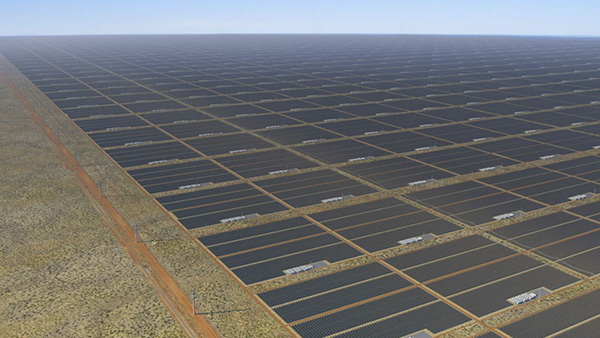
But it’s a win for the rare Typhonium plant, and possibly also for millions of crabs around Indonesia who might have been hypnotized by undersea cables like the ones near the UK are. And who knows what that cable would have done electromagnetically for turtles, dugongs, whales and dolphins? Where are the Greens when giant experimental industrial parks span 5,000km of wilderness?
Today the massive Sun Cable project collapsed into voluntary administration four years after promising to build the world’s largest solar power plant in the Northern Territory. Sun Cable was a $35 billion project supposedly to collect those sacred green electrons on a 12,000 hectare “farm” in Australia (120 square kilometers) and send them to Singapore via an 800 km land cable and then a 4,200km undersea cable. It was theoretically going to be nine times bigger than the largest solar plant in the world, and use a cable 6 times longer than the longest one ever built.
So this was ambition-on-steroids, and had economies of scale up the kazoo, and possibly as much sunlight as any place on Earth, but it was still obscenely uneconomic and expensive. Allegedly, environmentally, it would have achieved the equivalent of taking 2.5 million cars off the road each year, in other words, virtually nothing or even less. For $30b they were reducing the small Australian car fleet by… 12%.
The numbers never made sense unless the world valued green electrons so much more than black, brown, blue, red or white ones. That’s $30 billion for just 3.2GW of reliable energy? The same money buys quite a few nuclear plants that will last five times longer and reduce CO2 by vastly more. But it was never about “saving the world”, was it — just about building bigger subsidy farms, and winning a fashion contest at inner city dinner parties.
 The numbers never made sense. Ultimately the project was supposed to supply 15% of Singapore’s energy needs and also make 800MW for Darwin initially. When finished there would be “20GWp” in toto (or Gigawatt-peak). The plan also included 36-42 gigawatt hours of battery storage too, no doubt providing more jobs for child slaves in the Congo.
The legacy media is a defacto PR team for unreliable energy, so they’re selling this collapse as the fault of “Big Egos” — not because the solar project was a stupid idea.
Chnticleer, Australian Financial Review
It is feasible the world’s most ambitious solar energy generation project will go ahead. But don’t expect billionaires Mike Cannon-Brookes and Andrew Forrest to both be involved.
Sun Cable said the appointment of administrators followed “the absence of alignment with the objectives of all shareholders”.
“Whilst funding proposals were provided, consensus on the future direction and funding structure of the company could not be achieved,” it said.
Sun Cable must have been under considerable financial pressure leading into the end of 2022 judging from documents lodged with the corporate regulator about a series B preference share issue.
Assuming this preference share issue is not related to the capital raising announced last March, Sun Cable was forced to raise $28 million in late December through the issue of 11.9 million series B preference shares at $2.34 each. It is difficult to understand why a company such as Sun Cable, which is in the regulatory approval stage of its evolution, is apparently burning through so much cash.
In essence, Sun Cable’s strategic value is really at the mercy of the choices made by the Singaporeans, including how much they are willing to pay. Whoever buys Sun Cable will have to have deep pockets, because something of this scale and ambition will inevitably lose money well into the 2030s.
h/t Scott A, David B, Graeme#4, David Maddison
9.9 out of 10 based on 117 ratings
8.6 out of 10 based on 8 ratings
By The Babylon Bee.
Experts Say They Don’t Know What Thing Is Causing Everyone To Suddenly Collapse, But It’s Definitely Not That One Thing.
 “It’s too early to say what could be causing this, but it’s never too early to say what isn’t causing this,” said local expert, Dr. Scott Rufflinger. “This could be caused by anything. But the one thing we know for certain is that it’s definitely not what we’re all thinking that’s behind this — if you know what I mean. We can go ahead and rule that thing out right now because Science just called us on the phone and told us not to discuss it. We always follow Science.” “It’s too early to say what could be causing this, but it’s never too early to say what isn’t causing this,” said local expert, Dr. Scott Rufflinger. “This could be caused by anything. But the one thing we know for certain is that it’s definitely not what we’re all thinking that’s behind this — if you know what I mean. We can go ahead and rule that thing out right now because Science just called us on the phone and told us not to discuss it. We always follow Science.”
According to sources, experts have been working tirelessly around the clock to try and get to the bottom of why so many seemingly perfectly healthy, athletic people are falling over suddenly.

“I wish I could point to something in the past year or two that large groups of people were exposed to, or forced into, but nothing comes to mind,” added Dr. Rufflinger. “If only there was one thing all these patients had in common.”
__________________________________
If only it was all a joke
The studies
9.8 out of 10 based on 97 ratings
6.9 out of 10 based on 19 ratings
8.4 out of 10 based on 14 ratings
By Jo Nova
Is the dam wall breaking?
Last week the Wall Street Journal ran with a headline: Are vaccines fuelling new Covid variants? It would have been unthinkable last year. Back then, it was a pandemic of the evil un-vaccinated.
Tonight Consultant cardiologist Assem Malhotra has a double page spread in the UK Telegraph warning… “the jab can rapidly speed up the development of heart disease”. In his twitter feed he’s very excited: “Do they have proof? YES MORE THAN ENOUGH! “We’ve finally broken British mainstream news“. That tweet has now been seen by 2.1 million people. Obviously other people are excited too.
But steel yourself, the mainstream press is 3 years behind the news and the first journalists putting their heads over the parapet are making sure risky sentences are buried six feet deep in qualifiers. The risk of myocarditis is small they say, people recover fast (except for the ones that died), the vaccines are still useful, Covid causes myocarditis too, etc etc, ad nauseum.
Sarah Knapton, Telegraph
While there have always been anti-vaxxers, this new concern is drawing in people from outside usual conspiracy theory circles
The feature starts with a long introduction assuring us that Dr Malhotra is an expert who used to believe in the vaccines. What’s new is that he is not made out to be a crazy man.
Dr Malhotra is right to say that heart deaths have increased alarmingly in the last few years. According to the British Heart Foundation there have been around 30,000 more deaths than expected involving heart disease since the pandemic began – more than 230 additional deaths over expected rates each week.
While Dr Malhotra acknowledges that other causes are a factor, he remains convinced that vaccines are also playing a role. He cites Pfizer’s own trial data, which showed there were four cardiac arrests in those who took the vaccine compared with just one in the placebo group.
Ponder for a moment how blandly that was put. Some 30,000 people might have been killed by the vaccine. Well, it was just playing a role…
Only now, thirteen months late, is the Telegraph softly telling its audience about the Gundry trial of cardiac risk markers that doubled after vaccination. The same one we discussed here in November 2021.
They’re also making up excuses to cover their own spineless insouciance for the last three years:
The problems are only now coming to light because Phase 3 clinical trials have too few people enrolled to pick up rare events, particularly if the heightened risk occurs in a small subgroup – such as young men.
Buried at the bottom — the meme that may start to take off:
Dr Malhotra believes the jab can rapidly speed up the development of heart disease, and now includes vaccine damage in his diagnoses of patients.
“When you’ve got a pre-dose angiogram and a post-dose one that shows damage that usually takes years to trigger, you have to think of the most likely explanation,” said Dr Malhotra.
The Red Pill cometh
As word spreads to a new audience, suddenly thousands more people will be noticing things they didn’t notice before. They might realize Aunt Millie got boosted a few weeks before her heart attack, or that their own heart hasn’t been quite the same, or that there was a 15 year old at school who died suddenly. The gnawing sense that the vaccines can cause harm may ignite the ripe fields of discontent.
Once alerted to a pattern, a brain is good at finding it everywhere. For once, confirmation bias is our friend. Hopefully this is where things start to unravel for the Big Lie — “Safe and Effective”.
9.7 out of 10 based on 138 ratings
8.6 out of 10 based on 16 ratings
8 out of 10 based on 22 ratings
By Jo Nova
 Here we are after half a billion people caught Covid (that we know of) and now someone studies zinc tablets and mortality in a proper randomized trial? Here we are after half a billion people caught Covid (that we know of) and now someone studies zinc tablets and mortality in a proper randomized trial?
It turns out zinc treatment reduced the length of Covid suffering by about 3 days and the people who took it were 40% less likely to die.
The thing we learn from this study is that yet again, publicly funded science is killing people because it is not studying the obvious, cheap, low risk solutions that can’t be patented. Ministers of Health are apparently Ministers for Pharmaceutical profits.
This is the scandal:
To our knowledge, this study is the first well-powered, placebo-controlled clinical trial to report results of zinc for the treatment of patients with COVID-19.
To summarize the background: We already knew zinc was useful against quite a few viruses and have known this since 1974. We also knew from another study that 6 out of 10 Covid patients were deficient in zinc, and those patients were more likely to die. Odds were that zinc would be useful, low cost and low risk, so… we waited two years and let a few million people die before someone, somewhere managed to do this obvious study with 400 patients.
The activity of zinc against infectious pathogens has been demonstrated in a variety of viral species [12–16]. However, there is very scant information available on the role and effect of zinc in coronavirus disease [17–21]. Jothimani et al [18] in a recently published study including 47 patients with COVID-19 demonstrated that zinc deficiency was present in more than half (57.4%) of their cohort and was associated with prolonged hospitalization and increased mortality compared with a control group. In 4 outpatients with COVID-19, Finzi [19] reported that treatment with zinc reduced disease symptoms within 24 hours.
In the meantime we ignored nutrients, food and exercise and spent billions of dollars on secret deals, carrying out mass experimentation with wildly new technologies and unknown risks instead. And we even did it on our children.
Basically people who took zinc were better off than those who didn’t
This applied to old folks, young people, early treatment, late treatment and either sex:
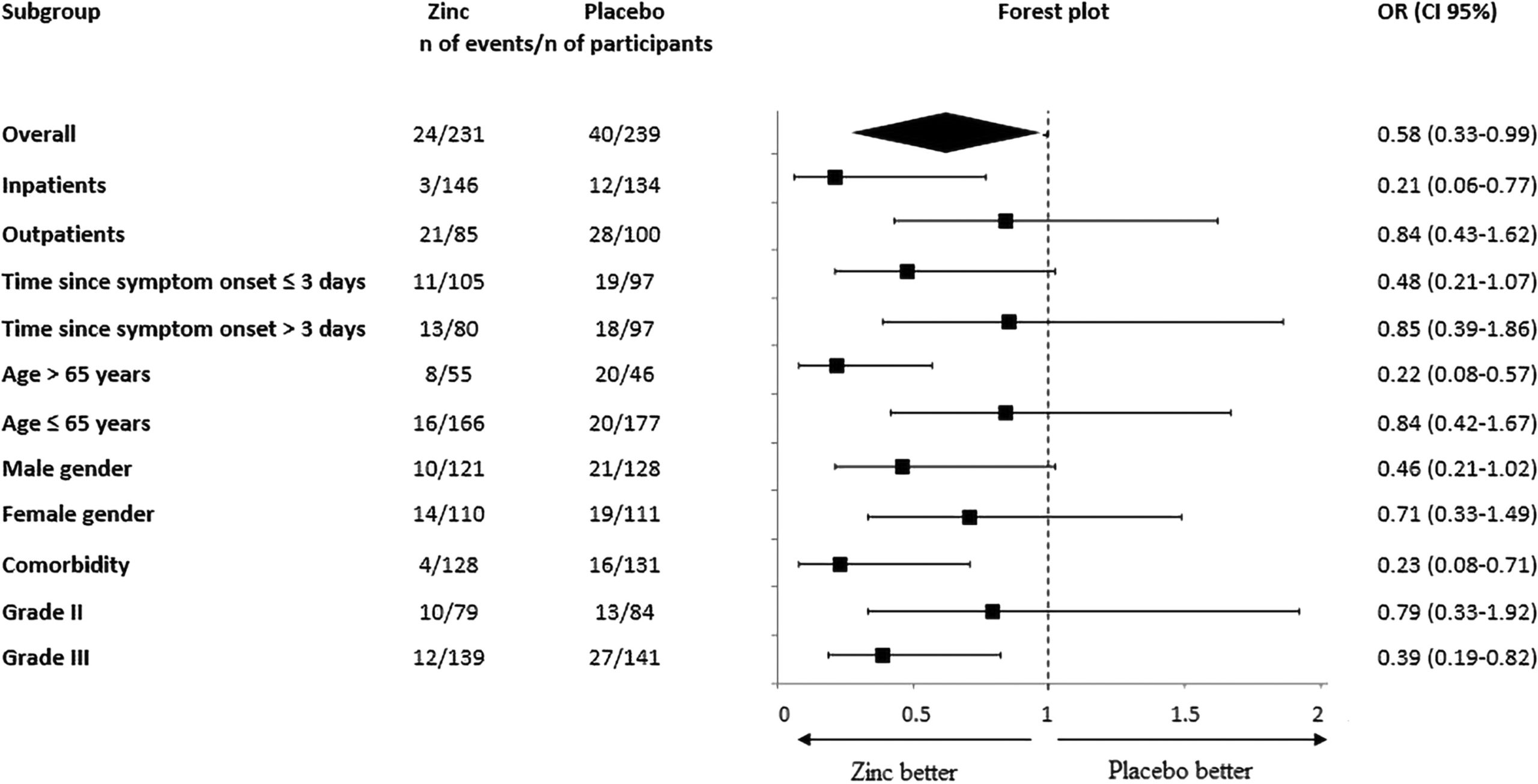 Zinc is better than “no zinc”. (Click to enlarge)
Zinc is used in over 300 enzymes and 1000 transcription factors (things we need to read our genes). It’s such an intrinsic part of us, fully 10% of all human proteins bind zinc. After iron, it is the second most common trace metal inside us and we carry about 2 – 4 grams of zinc within.
But the sad truth is people were using zinc in treatments nearly 2,000 years ago. Even the ancient Romans arguably knew more medicine than most Ministers of Health.
The oldest known pills were made of the zinc carbonates hydrozincite and smithsonite. The pills were used for sore eyes and were found aboard the Roman ship Relitto del Pozzino, wrecked in 140 BC.
—Wikipedia
And in case you were wondering, the modern Covid research was eventually done by a small African Pharmaceutical company.
“This work was supported by Opalia Recordati, Tunisia.”
They used a 25mg tablet twice a day for two weeks, which is a modest dose for a short time. It was their own brand, and presumably they want to sell more zinc tablets, so there is a conflict of interest. But unlike large western conglomerate pharmaceutical companies, perhaps they don’t have billion dollar patented anti-virals and vaccines to sell as well, so they aren’t worried that a cheap supplement will dent their most profitable products.
Despite the conflict of interest the results fit with other minor, smaller or imperfect studies on zinc that also show benefits in this order. For various reasons previous studies were usually too small, or retrospective, or studying a mixed bag of treatments, so hard to unpack. And the truth is, this study should be replicated with different doses and larger groups too, and it should have been done 30 years ago with other viruses already. How many man-years of productivity have we lost on influenza /RSV/ coronaviruses which might have been saved if zinc was used?
Why do we have publicly funded universities?
It is exactly this kind of “non-profit-making” research that taxpayers probably think our universities would be doing. Isn’t it time to advance science and stop funding universities? What is the point?
h/t David Maddison
REFERENCES
Keep reading →
9.5 out of 10 based on 107 ratings
…
7.7 out of 10 based on 14 ratings
 Sydney Observatory in the centre of the city in 1864. (Courtesy of the State Library of NSW.) By Jo Nova
For the first time in 163 years of records at Sydney Observatory the temperature didn’t even crack 32 degrees C (or 90F) for the whole year of 2022. Despite CO2 being at higher levels than ever, Sydney has never had temperatures that were so un-extreme.
The hottest day all year at this historic site was just 31.9 C. When researcher Chris Gillham first mentioned this, I assumed he must have meant “for the month of December”. I could not believe Sydney would go a whole year without a single hot day, but here it is. Gillham graphed the hottest day of the year at Sydney Observatory every year since 1859 and it really is unprecedented.
So far the total media attention on this point is one tweet by a weatherzone meteorologist and a paragraph in The Sydney Morning Herald. (h/t b.nice and RealClimateScience). Has the BoM even said a word? If it was the hottest year in 163 years, we’d know all about it. The BoM is an advertising agency for government policies.
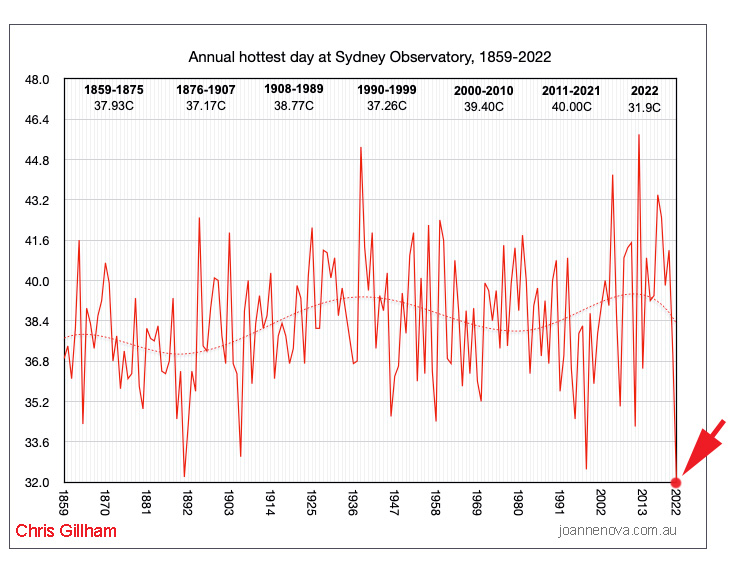 And this is despite many site changes which make the site warmer, including all the concrete, bitumen and 6-lane freeways added in the area. During the time shown in the graph, Sydney grew from 95,000 to 5 million people. And this is despite many site changes which make the site warmer, including all the concrete, bitumen and 6-lane freeways added in the area. During the time shown in the graph, Sydney grew from 95,000 to 5 million people.
Sydney Observatory is right in the heart of city, surrounded by cars and yet it would have felt hotter there in 1859.
 Sydney Observatory is right next to the busiest roads and tallest buildings in Sydney.
Soon children won’t know what summer is… 🙂
Most years in Sydney there are 6 to 20 days of temperatures above 32C. Many thanks to Chris Gillham for doing all the work to make these graphs.
 What happened to that extreme heat? What happened to that extreme heat?
The reason for the lack of hot days is due to the record amount of rain. In 2022 2,530 mm of water fell on Sydney, breaking the previous rainfall record of 2,194mm set in 1950. When soils are wet, sunlight must evaporate the moisture before the soil and air above it, can start to heat up. So more rain means cooler maximums.
To get hotter maximum temperatures takes bone dry sand. If only the Bureau of Meteorology could predict rainfall, droughts and La Nina’s, they might also be able to predict which years would have extreme heat? Wouldn’t that be handy?
Instead, the models are so bad, even the expert climate modelers don’t want to use their own models to help invest their own retirement funds.
For most people under 70 in Sydney this has been one the three coolest years they’ve ever known
Keep reading →
9.7 out of 10 based on 85 ratings
By Jo Nova

The amount of storage America needs for a grid run on erratic wind and solar power is so galactically vast the numbers don’t matter. Because every which way they are calculated, every estimate, the highest one, the lowest one, it doesn’t make any difference. They are all unaffordable.
And they’re not just unaffordable in the sense that it hurts. They’re unaffordable in the sense that there is no economy left.
Basically America would need 12,500 times as many batteries as it has now. At current prices this would cost about $175 trillion dollars, which is eight times the entire GDP of the United States.
Some researchers predict costs will fall, but even at fantasy low ball estimates that are one tenth of current prices, the cost of those batteries is still nearly $20 trillion.
David Wojick, CFACT
We now know that the battery storage for the entire American grid is impossibly expensive, thanks to a breakthru study by engineer Ken Gregory. Looking at several recent years he analyzed, on an hour by hour basis, the electricity produced with fossil fuels. He then calculated what it would have taken in the way of storage to produce the same energy using wind and solar power. He did this by scaling up those year’s actual wind and solar production.
Based on his work, which only covered 48 states, our round working estimate of the required storage for the whole country is an amazing 250 million MWh. America today has less than 20 thousand MWh of grid scale battery storage, which is next to nothing.
Grid scale batteries today cost around $700,000 a MWh. For 250 million MWh we get an astronomical total cost of $175 trillion dollars just to replace today’s fossil fuel generated electricity needs with wind and solar.
Let’s start with the reality. The EIA has collected annual utility data on the cost of grid scale battery arrays. A recent report is “Battery Storage in the United States: An Update on Market Trends — August 2021”.
From 2013 to 2018 the average reported cost was around $1,500,000 per MWh. The range was pretty large, from under $500,000 to around $3,000,000 per MWh.
Wojick compares a whole range of estimates on the past and likely future cost of batteries which vary from $70,000 per megawatt hour up to $1.5 million. As he says:
If wind and solar developers were required to include the batteries needed to make their projects reliable, none would ever be built.
It’s the cost of the system that matters, not the cost of a half hour of electrons at midday.
There is a reason fans of solar and wind power never quote the cost of a 24 hour reliable supply.
h/t To Alan Moran, more coming soon.
Photo: Karolina Grabowska
9.8 out of 10 based on 109 ratings
…
9.3 out of 10 based on 8 ratings
By Jo Nova
Seeding the ground for a revolution?
Despite the censorship and the gagging of doctors, somehow, against the odds, nearly half of the US population believes it’s at least “somewhat likely” that Covid vaccines have killed people. Astonishingly over a quarter said they personally know someone who has died and whose death may have been linked to vaccination.

The population is now starkly divided. When someone dies unexpectedly, half the nation is wondering if it was caused by the vaccines, but another third think those people are just spreading conspiracies.
It follows (surely) that some significant slab of the West has had a profound loss of trust in our health institutions and the government. It is also an indictment of most of the legacy media which hasn’t mentioned vaccine side effects at all. Half the population know they are not telling the truth. How is this sustainable?
Rasmussen Reports
Twenty-eight percent (28%) of adults say they personally know someone whose death they think may have been caused by side effects of COVID-19 vaccines, while 61% don’t and another 10% are not sure.
The documentary Died Suddenly has been criticized as promoting “debunked” anti-vaccine conspiracy theories but has been seen by some 15 million people.
Forty-eight percent (48%) of Americans believe there are legitimate reasons to be concerned about the safety of COVID-19 vaccines, while 37% think people who worry about vaccine safety are spreading conspiracy theories. Another 15% are not sure.
How many lives have been touched by “unexplained deaths”?
Somewhere between one fifth and one half of the population may know of “an unexplained death”. Twice as many unvaccinated people say they do:
Similarly, while 45% of those who have not been vaccinated against COVID-19 think someone they know personally might have died from vaccine side effects, only 22% of vaccinated adults think so.
The unvaccinated may be overestimating the deaths just as the vaccinated may be underestimating them. Either way, if one in four people know someone who died unexpectedly, that’s still an awful lot of deaths.
About 7% of vaccinees say they had a major side effect
One month ago in a similar Rasmussen survey results came out suggesting a lot of the population can see the dark side of vaccines for the saddest of reasons:
Sixty-eight percent (68%) of adults say they’ve gotten a COVID-19 vaccination, and a majority (56%) of vaccinated adults report no side effects from the vaccine. Thirty-four percent (34%) say they had minor side effects and seven percent (7%) reported major side effects from the vaccine.
It’s not clear what “major” means. But if 7% of the 70% who are vaccinated had a major reaction, that’s 5% of the whole population. With a household size of three in the US, that means 15% of the population live with someone who had a bad reaction.
Concerns about vaccines is spread across both sides of politics
Keep reading →
9.5 out of 10 based on 73 ratings
8.2 out of 10 based on 11 ratings
 By Jo Nova By Jo Nova
After four years of “public disruption” Extinction Rebellion (XR) has decided to stop being a public nuisance and develop “relationships instead”. This is a group that prances around in doomsday costumes, and tried gluing themselves to the top of commuter trains at peak hour in London. (Furious passengers dragged them off.)
Extinction Rebellion has decided to be rebellious by, wait for it… holding mass rallies instead.
In the end, they said after four years of protesting, XR admit their failure: “very little has changed. Emissions continue to rise and our planet is dying at an accelerated rate.”
So for some reason, despite four years of costumes, chanting, and naked protests, the global atmosphere did not change. Who could have seen that coming?

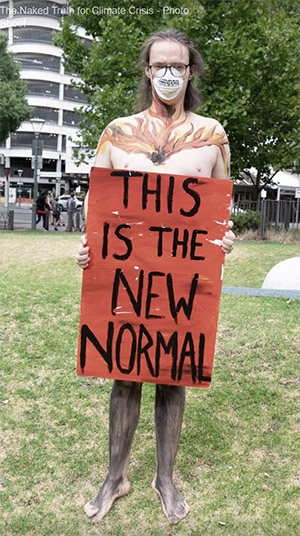 Just another ordinary worker trying to warn us about climate werewolves or something. XR were losing the popularity race
The Guardian
Activists with XR, which launched in 2018, became known for civil disobedience, from planting trees on Parliament Square to superglueing themselves to the gates of Buckingham Palace. Some smashed windows at bank headquarters and at News UK, the publisher of the Sun and Times newspapers. But the group became disliked by more people than liked, according to polling by YouGov.
The YouGov poll shows a third of the UK disliked them, a third hadn’t heard of them, and just 21% felt warmly about them. Basically, half the people who knew they existed didn’t like them.
When included in a list of charities, and ranked by popularity, the rebels saving-the-world were in 127th place. They can’t be happy with that.
Even though XR say they are going to play nice, Just Stop Oil and “Insulate Britain” have popped up to say they are just as committed as ever to civil disobedience. So we won’t notice any difference in public nuisance protests, just the t-shirts have changed.
Doomsday cultists who like dressing up still have plenty of choices.
Posts on Extinction Rebellion:
Keep it coming XR: Just some average Aussie naked people trying to scare the kiddies
Extinction Rebellion are run by paid activists — the £200,000 “grassroots” movement
Red Brigade photo: Gazamp
9.8 out of 10 based on 69 ratings
8.7 out of 10 based on 11 ratings
By Jo Nova
The government of Italy is planning to build new nuclear power plants. And if it happens, it marks an astonishing turnaround.
This was the Garigliano Nuclear Power plant in Italy in 1970. They already had the solution to it all, energy wars, Vladimir Putin, and fantasy “climate control” fifty years ago.
But Italy abandoned nuclear energy thirty years ago. It’s the only major European country to have stopped using nuclear power. (Though Germany is trying to).
Italy had four nuclear plants in the early 1980s but after the Chernobyl accident, they held a referendum on nuclear power, and the voters didn’t want it anymore, so they closed the last two reactors by 1990, (back in the days when voting made a difference). Furthermore, Italy held another referendum in 2011, and 94% of the voters rejected it again, which shows how desperate the situation must be now if an opinion poll like that has shifted so far in 11 years?
The thing is, Italy only makes 25% of its energy itself, and so it is suddenly very attuned to “geopolitical risk”.
Pierre Goselin at NoTricksZone found a news piece on this Nuclear U-turn in the Berliner Morgenpost. Otherwise, it’s crickets from the worlds media.
by Micaela Taroni
Under the pressure of the energy crisis, however, the Italians suddenly became painfully aware of their heavy dependence on electricity from abroad. The topic moves the citizens because they clearly feel the increase in their electricity bills despite government support.
Although renewable energies have been significantly expanded in recent years, the production of green electricity is far from sufficient.
No wonder that the new government around the right-wing populist Giorgia Meloni regards the return to nuclear energy, which the Italians had renounced following a referendum in 1987, as a solution to the energy problems.
The Infrastructure Minister (who happens to lead the second largest party in the Coalition) is dead keen:
“Italy cannot be the only major country in the world without nuclear energy. We cannot talk about phasing out gas, petrol and diesel without discussing nuclear energy,” [Matteo] Salvini explained, proposing that a nuclear power plant could be built in Milan, in his Baggio district.
When environmentalists objected that Italy was a densely populated country prone to earthquakes, landslides and floods, and on whose soil it would be better not to build nuclear reactors, Salvini replied that there were 440 nuclear reactors in operation worldwide, including several in seismically active Japan and a dozen of them in France, just over the Italian border. “Reactors of the latest generation are the safest and cleanest form of energy production, that’s the future,” assured the Lega boss.
As usual the left-leaning parties that want to reduce emissions will do anything to Not achieve that. Apparently, the big problem with nuclear power is that even though it will solve their emissions fears, it won’t meet some arbitrary committee deadline that no one else is going to meet anyway:
The Social Democrats see this “green transition” as an opportunity for the country’s economy. They oppose nuclear energy because, in their view, the timeframe and existing technologies are incompatible with a significant reduction in CO2 emissions by 2030.
It’s almost like the Social Democrats are just the useless minions for the big bankers or the renewable industry. What they fear more than the climate catastrophe is the end of their fake crisis.
So the big question then, is will Italians accept a nuclear plant now?
(The translation here is just from Chrome, don’t blame Pierre! )
The World Nuclear Association has more information on Nuclear Power in Italy.
10 out of 10 based on 76 ratings
9.4 out of 10 based on 16 ratings
Best wishes to everyone…

Let there be justice.
Photo: shirley_156
9.7 out of 10 based on 59 ratings
|
JoNova A science presenter, writer, speaker & former TV host; author of The Skeptic's Handbook (over 200,000 copies distributed & available in 15 languages).

Jo appreciates your support to help her keep doing what she does. This blog is funded by donations. Thanks!


 Follow Jo's Tweets
Follow Jo's Tweets To report "lost" comments or defamatory and offensive remarks, email the moderators at: support.jonova AT proton.me
Statistics
The nerds have the numbers on precious metals investments on the ASX
|

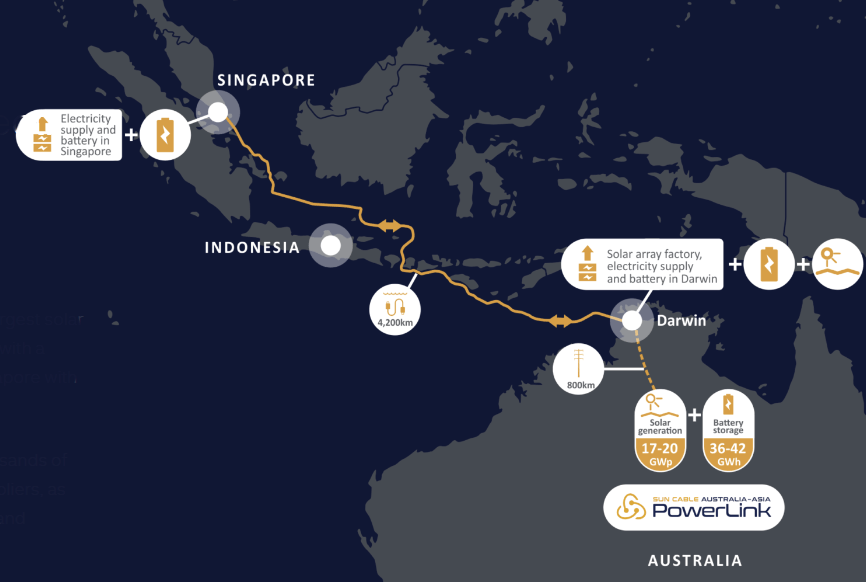

















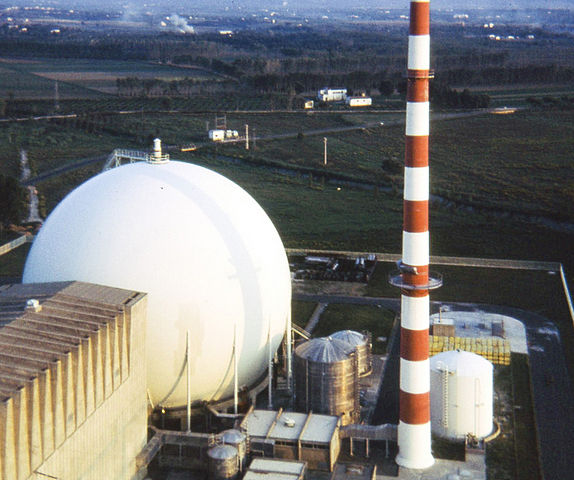












Recent Comments